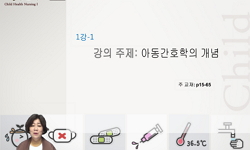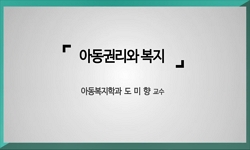본 연구의 목적은 아동의 대인지각 및 자기지각간의 관계를 밝히고, 이들 대인지각 및 자기지각이 문제해결 행동 및 또래지위에 어떠한 양상으로 기여하는지를 파악하는 것이다. 아동의 대...
http://chineseinput.net/에서 pinyin(병음)방식으로 중국어를 변환할 수 있습니다.
변환된 중국어를 복사하여 사용하시면 됩니다.
- 中文 을 입력하시려면 zhongwen을 입력하시고 space를누르시면됩니다.
- 北京 을 입력하시려면 beijing을 입력하시고 space를 누르시면 됩니다.
아동의 대인지각과 문제해결 행동 및 또래지위와의 관계 = The Perceptions of Parents, Family, Self, and Peers in School-Age Children:Links with Problem-Solving Behaviors and Sociometric Status
한글로보기https://www.riss.kr/link?id=T8935389
- 저자
-
발행사항
[]: 淑明女子大學校, 1997
-
학위논문사항
학위논문(박사) -- 淑明女子大學校 大學院 , 兒童福祉學科 兒童心理 , 1997
-
발행연도
1997
-
작성언어
한국어
- 주제어
-
KDC
183.000
-
발행국(도시)
대한민국
-
형태사항
vii, 143 p..
- 소장기관
-
0
상세조회 -
0
다운로드
부가정보
국문 초록 (Abstract)
본 연구는 5,6학년 아동 625명을 대상으로 질문지 조사가 실시되었으며, 최종 분석에는 603명의 자료가 사용되었다. 부모에 대한 아동의 지각을 측정하기 위해서는 박영애(1995)의 양육행동 척도 중 온정·수용요인 37개 문항을, 가족에 대한 지각을 측정하기 위해서는 Dubow와 Ullman(1989)의 사회적 지지척도 중 가족에 관한 11문항을, 그리고 자기와 또래에 대한 지각을 측정하기 위하여 Rudolph, Hammen, 그리고 Burge(1995)의 POPS(Perceptions of peer and self questionnaire)를 사용하였다. 행동예상을 측정하기 위하여는 Rudolph, Hammen, 그리고 Burge(1995)의 CESBQ(Children's Expectations of Social Behavior Questionnaire)를 사용하였고, 문제해결 행동척도는 연구자가 제작하여 사용하였다. 자료분석은 평균과 표준편차, 단순상관분석, 일원변량분석, t-test, 그리고 중다회귀분석을 이용한 경로분석이 사용되었다.
본 연구의 결과를 요약하면 다음과 같다.
첫째, 부모, 가족, 또래, 그리고 자기에 대한 아동의 지각들 간에 정적상관이 있었다. 아버지보다는 어머니에 대한 지각이 자기지각 및 또래에 대한 지각과 상관이 더 높았고, 자기지각은 또래에 대한 지각과 상관이 가장 높았다. 그리고 부모와 또래에 대한 아동의 지각과 예상 간에도 정적상관이 있었다. 부모에 대한 행동예상과 또래 행동예상은 세 가지 행동예상 유형들 간에 모두 정적상관이 있었다.
이러한 결과들은 부모, 가족과의 초기 경험은 자기지각 및 아동기의 주된 사회적 관계인 또래에 대한 지각으로 변형되어 아동의 대인지각은 또 다른 관계로 일반화될 수 있음을 의미한다.
둘째, 문제해결 행동은 아버지보다는 어머니에 대한 지각과의 상관이 더 높았고, 남, 여 아동을 따로 볼 경우, 대인지각 및 자기지각의 전 영역에서 여아의 지각이 남아보다 문제해결 행동과 상관이 높았다. 자기 및 또래에 대한 지각의 문제해결 행동에 대한 매개변인의 역할에 대한 분석결과, 남아의 경우에, 부모/가족에 대한 지각은 문제해결 행동에 직접효과만 있었고, 자기지각과 또래지각을 통한 간접효과는 나타나지 않았다. 여아의 경우에, 부모/가족에 대한 아동의 지각은 문제해결 행동에 대한 직접효과와 자기지각과 또래지각을 매개로 한 간접효과가 모두 나타났다. 자기지각과 또래에 대한 여아의 지각은 문제해결 행동에 있어서 부모/가족과의 경험이 문제해결 행동이라는 사회적 행동과 연결시켜 주는 매개변인의 역할을 하였다.
셋째, 부모/가족, 자기, 그리고 또래에 대한 아동의 지각은 또래지위에 따라서 차이가 있었다. 거부아동은 ,대인지각 및 자기지각의 전 영역에서, 인기아동보다 부정적이었고, 특히 또래에 대한 지각의 표준화 평균 점수가 가장 낮았다. 사회적 선호도는 어머니보다는 아버지에 대한 지각과의 상관이 더 높았고, 남아는 여아에 비해서 어머니, 또래, 그리고 자기에 대한 지각과 사회적 선호도와의 상판이 더 높았다. 여아는 어머니보다 아버지에 대한 지각의 상관이 더 높았다. 자기지각은 남아의 경우에만 사회적 선호도에 있어서 부모/가족에 대한 지각의 매개변인의 역할이 나타냈고, 또래에 대한 지각은 남, 여 아동 모두 사회적 선호도에 있어서 부모/가족에 대한 지각의 매개변인의 역할을 하였다.
본 연구의 목적은 아동의 대인지각 및 자기지각간의 관계를 밝히고, 이들 대인지각 및 자기지각이 문제해결 행동 및 또래지위에 어떠한 양상으로 기여하는지를 파악하는 것이다. 아동의 대인지각에는 부모, 가족, 또래가 포함되었다.
본 연구는 5,6학년 아동 625명을 대상으로 질문지 조사가 실시되었으며, 최종 분석에는 603명의 자료가 사용되었다. 부모에 대한 아동의 지각을 측정하기 위해서는 박영애(1995)의 양육행동 척도 중 온정·수용요인 37개 문항을, 가족에 대한 지각을 측정하기 위해서는 Dubow와 Ullman(1989)의 사회적 지지척도 중 가족에 관한 11문항을, 그리고 자기와 또래에 대한 지각을 측정하기 위하여 Rudolph, Hammen, 그리고 Burge(1995)의 POPS(Perceptions of peer and self questionnaire)를 사용하였다. 행동예상을 측정하기 위하여는 Rudolph, Hammen, 그리고 Burge(1995)의 CESBQ(Children's Expectations of Social Behavior Questionnaire)를 사용하였고, 문제해결 행동척도는 연구자가 제작하여 사용하였다. 자료분석은 평균과 표준편차, 단순상관분석, 일원변량분석, t-test, 그리고 중다회귀분석을 이용한 경로분석이 사용되었다.
본 연구의 결과를 요약하면 다음과 같다.
첫째, 부모, 가족, 또래, 그리고 자기에 대한 아동의 지각들 간에 정적상관이 있었다. 아버지보다는 어머니에 대한 지각이 자기지각 및 또래에 대한 지각과 상관이 더 높았고, 자기지각은 또래에 대한 지각과 상관이 가장 높았다. 그리고 부모와 또래에 대한 아동의 지각과 예상 간에도 정적상관이 있었다. 부모에 대한 행동예상과 또래 행동예상은 세 가지 행동예상 유형들 간에 모두 정적상관이 있었다.
이러한 결과들은 부모, 가족과의 초기 경험은 자기지각 및 아동기의 주된 사회적 관계인 또래에 대한 지각으로 변형되어 아동의 대인지각은 또 다른 관계로 일반화될 수 있음을 의미한다.
둘째, 문제해결 행동은 아버지보다는 어머니에 대한 지각과의 상관이 더 높았고, 남, 여 아동을 따로 볼 경우, 대인지각 및 자기지각의 전 영역에서 여아의 지각이 남아보다 문제해결 행동과 상관이 높았다. 자기 및 또래에 대한 지각의 문제해결 행동에 대한 매개변인의 역할에 대한 분석결과, 남아의 경우에, 부모/가족에 대한 지각은 문제해결 행동에 직접효과만 있었고, 자기지각과 또래지각을 통한 간접효과는 나타나지 않았다. 여아의 경우에, 부모/가족에 대한 아동의 지각은 문제해결 행동에 대한 직접효과와 자기지각과 또래지각을 매개로 한 간접효과가 모두 나타났다. 자기지각과 또래에 대한 여아의 지각은 문제해결 행동에 있어서 부모/가족과의 경험이 문제해결 행동이라는 사회적 행동과 연결시켜 주는 매개변인의 역할을 하였다.
셋째, 부모/가족, 자기, 그리고 또래에 대한 아동의 지각은 또래지위에 따라서 차이가 있었다. 거부아동은 ,대인지각 및 자기지각의 전 영역에서, 인기아동보다 부정적이었고, 특히 또래에 대한 지각의 표준화 평균 점수가 가장 낮았다. 사회적 선호도는 어머니보다는 아버지에 대한 지각과의 상관이 더 높았고, 남아는 여아에 비해서 어머니, 또래, 그리고 자기에 대한 지각과 사회적 선호도와의 상판이 더 높았다. 여아는 어머니보다 아버지에 대한 지각의 상관이 더 높았다. 자기지각은 남아의 경우에만 사회적 선호도에 있어서 부모/가족에 대한 지각의 매개변인의 역할이 나타냈고, 또래에 대한 지각은 남, 여 아동 모두 사회적 선호도에 있어서 부모/가족에 대한 지각의 매개변인의 역할을 하였다.
다국어 초록 (Multilingual Abstract)
The statistical procedures adopted for the analyses of the data included Pearson's correlation, t-test, one-way ANOVA, and a path analysis which used multiple regression procedures. Results showed positive correlations among four measures of social perceptions (to parents, to family, to peer, and to self). Children's perceptions of self and of peers were much more highly related to those of mother than to those of father. Children's Self perceptions in the context of peer relationships were most highly related to the perceptions of their peer. The significant correlations emerged among the measures of social perceptions and interpersonal expectancies within the parents/family and peer domains.
Children's expectations of paternal indifference, hostility, and support were significantly correlated with peer indifference, hostility, and support. Therefore we have found generalization among children's representations across four interpersonal domains- that is, parents, family, self, and peer. Children's problem solving-behaviors were most significantly related with parents/family domains among interpersonal relationships. Moreover this showed higher correlations with children's perception of maternal behavior than of paternal behavior, and with girls' perceptions of three interpersonal domains than with boys'. In the case of boys, direct path between the perceptions of parents/family and problem solving-behavior was significant, whereas indirect path was not found by the children's perceptions of both self and peer. By contrast, girls' perception of parent/family was associated with problem solving-behavior both directly and indirectly, through girls' perceptions of self and peer. Girls' perceptions of parents/family whose indirect effect on their problem solving behavior were mediated by their perception of self and peers.
According to sociometric groups, rejected children possessed the most negative representation within each interpersonal domain. Although rejected group differed from popular group in all three domains, neglected children did not differ significantly in the negativity of parent/family representation. Social preference was highly correlated with perceptions of peer and of father. The direct path between boys' perceptions of parent/family and peer ratings of social preference was no longer significant, whereas there was a significant path mediated by their perceptions of self. This suggests that boys' perceptions of self are mediating variables between the perceptions of parents/family and their peer acceptance. This study has found that both boys' and girls' peer representations were established for the role as mediators between parent/family representations and peer ratings of social preference. These findings revealed that the impact of family representations on peer rejection was mediated by children's beliefs about their peers. In addition, negative representations of self and others were found to be associated with increased social impairment, including dysfunctional social behavior and less positive status in the peer groups.
The purpose of this study was to investigate the correlation between children's perceptions of interpersonal relations (parents, family, and peers) and those of self, and to examine how the perceptions are related to problem-solving and sociometric st...
The purpose of this study was to investigate the correlation between children's perceptions of interpersonal relations (parents, family, and peers) and those of self, and to examine how the perceptions are related to problem-solving and sociometric status. The subjects of this study were 625 children of 5th and 6th grade in 4 primary schools in Taejon City. 603 children's answers of them were analysed for this study. The research instruments used in the present study included 37 items (parental warmth· acceptance) from CBQ (Childrearing Behavior Questionnaire, Young Yae Park, 1995), 11 items (family support) from APP (Social Support Appraisals Scale, Dubouw & Ulman, 1989), POPS (Perceptions of Peer and Self Questionnaire, Rudolph, Burge, & Hammen, 1995), CESBQ (Children's Expectations of Social Behavior Questionnaire, Rudolph, Burge, & Hammen, 1995), and Problem-Solving Behavior Questionnaire (developed for this study and composed of 20 items).
The statistical procedures adopted for the analyses of the data included Pearson's correlation, t-test, one-way ANOVA, and a path analysis which used multiple regression procedures. Results showed positive correlations among four measures of social perceptions (to parents, to family, to peer, and to self). Children's perceptions of self and of peers were much more highly related to those of mother than to those of father. Children's Self perceptions in the context of peer relationships were most highly related to the perceptions of their peer. The significant correlations emerged among the measures of social perceptions and interpersonal expectancies within the parents/family and peer domains.
Children's expectations of paternal indifference, hostility, and support were significantly correlated with peer indifference, hostility, and support. Therefore we have found generalization among children's representations across four interpersonal domains- that is, parents, family, self, and peer. Children's problem solving-behaviors were most significantly related with parents/family domains among interpersonal relationships. Moreover this showed higher correlations with children's perception of maternal behavior than of paternal behavior, and with girls' perceptions of three interpersonal domains than with boys'. In the case of boys, direct path between the perceptions of parents/family and problem solving-behavior was significant, whereas indirect path was not found by the children's perceptions of both self and peer. By contrast, girls' perception of parent/family was associated with problem solving-behavior both directly and indirectly, through girls' perceptions of self and peer. Girls' perceptions of parents/family whose indirect effect on their problem solving behavior were mediated by their perception of self and peers.
According to sociometric groups, rejected children possessed the most negative representation within each interpersonal domain. Although rejected group differed from popular group in all three domains, neglected children did not differ significantly in the negativity of parent/family representation. Social preference was highly correlated with perceptions of peer and of father. The direct path between boys' perceptions of parent/family and peer ratings of social preference was no longer significant, whereas there was a significant path mediated by their perceptions of self. This suggests that boys' perceptions of self are mediating variables between the perceptions of parents/family and their peer acceptance. This study has found that both boys' and girls' peer representations were established for the role as mediators between parent/family representations and peer ratings of social preference. These findings revealed that the impact of family representations on peer rejection was mediated by children's beliefs about their peers. In addition, negative representations of self and others were found to be associated with increased social impairment, including dysfunctional social behavior and less positive status in the peer groups.
목차 (Table of Contents)
- 목차
- 논문개요 = vi
- I. 서론 = 1
- 1. 연구의 필요성 및 목적 = 1
- 2. 연구문제 = 6
- 목차
- 논문개요 = vi
- I. 서론 = 1
- 1. 연구의 필요성 및 목적 = 1
- 2. 연구문제 = 6
- 3. 용어의 정의 = 6
- II. 이론적 배경 = 9
- 1. 대인지각 = 9
- 2. 대인지각 및 자기지각과 문제해결 행동 = 13
- 1) 문제해결 행동 = 14
- 2) 대인지각 및 자기지각과 문제해결 행동과의 관계 = 15
- 3. 대인지각 및 자기지각과 또래지위 = 20
- 1) 사회성 측정 = 20
- 2) 대인지각 및 자기지각과 또래지위와의 관계 = 24
- III. 연구방법 = 29
- 1. 연구대상 = 29
- 2. 측정도구 = 31
- 3. 자료수집 절차 = 39
- 4. 자료분석 = 41
- IV. 연구결과 = 43
- 1. 대인지각 및 자기지각간의 관계 = 43
- 2. 대인지각 및 자기지각과 문제해결 행동과의 관계 = 51
- 3. 대인지각 및 자기지각과 또래지위와의 관계 = 58
- V. 논의 및 결론 = 69
- 1. 논의 = 69
- 1) 대인지각 및 자기지각간의 관계 = 69
- 2) 대인지각 및 자기지각과 문제해결 행동과의 관계 = 73
- 3) 대인지각 및 자기지각과 또래지위와의 관계 = 76
- 2. 결론 = 81
- 참고문헌 = 86
- 부록 = 105
- 영문초록 = 141












